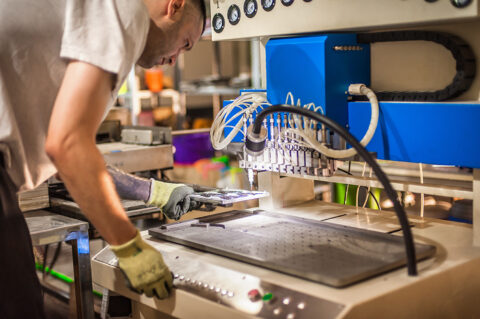The halls of Hannover Messe, the world’s largest industrial technology trade show, were once again buzzing with the promise of artificial intelligence this year. But amidst the flashy displays and bold claims, two industry veterans saw more smoke than fire.
Natan Linder and Rony Kubat, co-founders of manufacturing software provider Tulip, took to the exhibition floor to assess the state of AI in the industrial sector. What they found was a landscape cluttered with marketing speak and vague value propositions, leaving customers confused and overwhelmed.
“I’m really sorry for your experience in Hannover,” Linder quipped. “Customers are just confused. Like you come here to learn all the kind of stuff and I think you come out completely confused. And it’s reflective of this state of the industry.”
Linder and Kubat noted a glaring gap in the AI narrative: a lack of focus on tools that empower and augment frontline workers. While vendors tout “intelligent factories” and “edge computing,” few are grappling with the realities of how AI can make life better for the human operators who keep the wheels of industry turning.
Where is the AI to work for the people who actually do the work? The crazy thing is that people say edge and data and break the silos and all these kind of things for what? To create a smart factory, intelligent factory, this, that’s in the other. What makes it a smart factory? Above all, the people in the factory.
Tulip’s approach, by contrast, is anchored in the principles of citizen development and worker enablement. The company’s AI Composer, for example, streamlines content translation and transformative updates, while its agent functionality allows workers to offload tasks to autonomous compute and build “digital teams” to support their day-to-day.
But even for firms like Tulip that are trying to cut through the hype, barriers to AI adoption in manufacturing remain stubbornly high. Legacy systems, high-stakes environments, and a lack of trust conspire to slow the pace of innovation relative to the breakneck speed of the software world.
To truly unlock the potential of AI in manufacturing, Linder and Kubat argue, the industry needs to crack the code on interoperability. That means building systems that can seamlessly interact, share context, and orchestrate multiple AI models across disparate platforms.
“Platforms definitely help,” said Linder. “And the other thing that can happen is brings you to item number two. So it’s not going to be as long as item number one, I promise you because it’s a very short, simple thing that we’re missing here, which very few people talk here about the requirement to having interoperable AI.”
While Hannover Messe 2025 showcased plenty of impressive technology, the event also underscored the long road ahead for AI in manufacturing. Cutting through the noise, focusing relentlessly on frontline empowerment, and enabling true interoperability will be key to separating the winners from the washouts in this dynamic space.
For Tulip and its ilk, the mission is clear: to build the tools and platforms that will finally allow manufacturers to turn the AI hype into reality on the factory floor. The rest of the industry would do well to take note – and to start putting the needs of human workers front and center.
To hear more of Natan Linder and Rony Kubat’s insights, check out the full episode of the Augmented Ops podcast wherever you get your podcasts. And for more on Tulip’s vision for the future of manufacturing, visit tulip.co.




